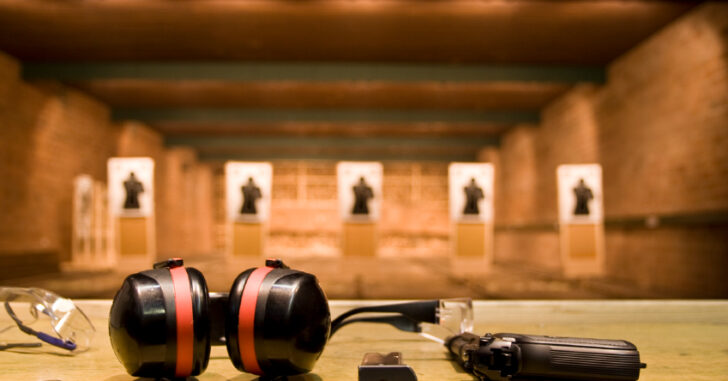There are a lot of states that require some form of mandatory training prior to issuing a concealed carry permit. In almost all cases, that training includes as much (if not more) classroom time than it does range time. And then there are states like Vermont and others which are constitutional carry – permitless concealed carrying of firearms is permitted.
So some are required to undergo formal training prior to receiving a concealed carry permit and others are not? Does that mean those states know something the rest of them don’t or is it a pointless task?
If you’ve never handled a firearm before in your life and pick one up for the first time, the four basic rules you need to know are:
- Treat every firearm as if it were loaded.
- Don’t point your firearm at anything you do not intend to shoot.
- Keep your finger off of the trigger until you are ready to fire.
- Don’t shoot at anything until you know what’s in front and behind it.
Following these four basic safety rules virtually guarantees you will never have a negligent discharge. A negligent discharge, in this case, being when your firearm discharges not by your direct intent. Negligent discharges come up often because it’s the first cited reason when a firearm goes off during routine maintenance, in the holster, or if someone has been toying around with a firearm.
The biggest mistake first time concealed carriers make is assuming they understand firearms. Understanding how firearms work and their safe operation is the very first priority before using one. Will a trainer be able to fix this?
Train The Basics – Practice To Improve
Most trainers stress the importance of safely operating a firearm. They also stress the fundamentals of good marksmanship. However, not every trainer is perfect. Each one is likely to have his or her own understanding of firearms and that interpretation may, at times, clash.
Outside of understanding applicable Federal and State ordinances surrounding your carriage and use of firearms, the four fundamental safety principles, and the basic principles of marksmanship, the next big boost in a person’s ability to successfully employ a firearm is practice.
Getting out there on the range and applying those skill sets – safety and marksmanship – will eventually produce a competent shooter capable of responding to a life threatening situation in the best way possible.
Training and practice do not guarantee success. Nothing can. But they do significantly increase the odds in a life-threatening situation.
Side-by-Side Comparison of Three Imaginary Concealed Carriers
Carrier 1 (“No Training”) has never practiced a single day in his life but carries a concealed firearm on him on a daily basis. He hasn’t so much as dry fired the pistol. In fact, he hasn’t read our article about routine maintenance, either. Just a really “lost-in-the-sauce” type of guy.
Carrier 2 (“Average Joe”) goes to a pistol range once or twice a month. He keeps a pistol in his glove box sometimes but rarely ever carries on his person. He understands how the pistol works, basic safety requirements, and has even become proficient with his primary concealed carry pistol.
Carrier 3 (“Superman”) has undergone tactical simulations, practices religiously at the range once a week, keeps a firearm on him at all times and spare magazines. He lives and breathes the four basic safety principles and switches back and forth between different firearms to suit the occasion.
Which of these three is best prepared to handle a hostile situation?
The truth? There’s absolutely no way of knowing. While Carrier 3 obviously seems to have his game together and Carrier 2 describes a lot of concealed carriers out there currently, Carrier 1 is no less capable than the other two. In fact, oddly enough, we’d bet that Carrier 3 and 1 may actually be the first to respond to a situation. Carrier 2 leaves his pistol in the car. So “No Training” and “Superman” are actually in better positions to respond because they have their firearms on them. “Average Joe”, while capable, is left to the mercy of chance.
No man is invulnerable and no amount of training the world can guarantee success. If placing bets, certainly Carrier 3 would seem the likely candidate but reality is strange.
If You Carry A Firearm – Practice It
That is truthfully the best middle philosophy in all of this. The concealed carry firearm that you carry on your person is only as capable as the person using it. The more familiar you are with its operation, the more psychologically prepared you are to use it.
The concept that most law abiding firearm owners are too stupid to carry a firearm without training is degrading and largely untrue. Plenty of states have no requirement for training and are still able to have the vast majority of firearm owners (and concealed carriers) avoid injuring themselves or others. Do the ones who do injure themselves or others make the rest of us look bad? Sure. But we’re not them. And if we obey the basic tenets of firearm safety, practice and familiarize ourselves with the firearm we carry on a daily basis – we are completely capable.

